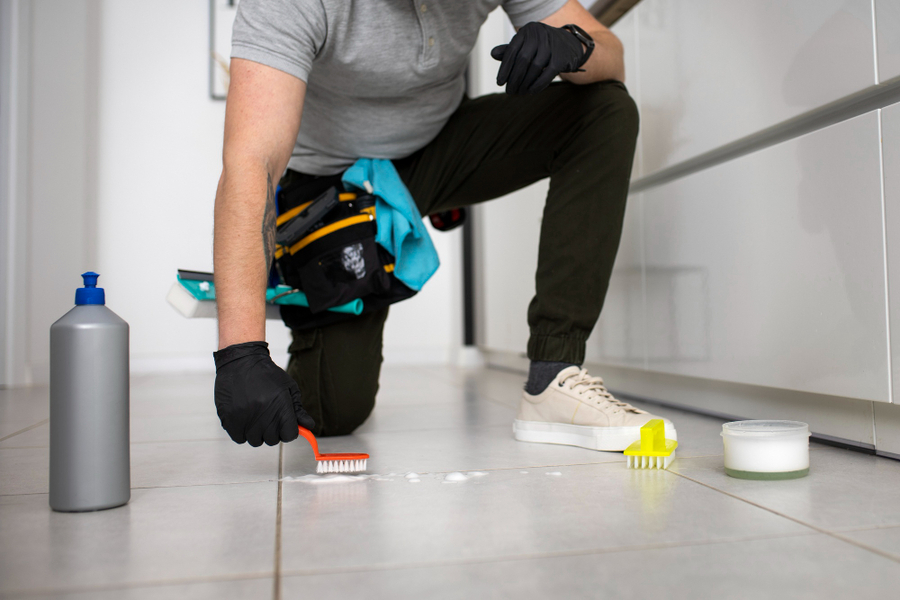
For tile installation professionals and savvy DIY enthusiasts, the materials you use behind and between the tile are often more critical than the tile itself. While a beautiful ceramic or stone finish is what the client sees, the long-term success of any bathroom—especially a shower enclosure—rests on a few key, unsung heroes: the waterproofing membrane, the thinset, and, most importantly, the caulks and sealants.
A failure in sealing is the number one cause of water damage, mold, mildew, and costly callbacks in bathroom renovations. It is not enough to simply use any caulk; you must select a product engineered to withstand the unique rigors of constant moisture, high humidity, and structural movement.
Here is the definitive guide to choosing safe, professional-grade caulks and sealants for your bathroom tile project, featuring trusted products available at Tile Pro Depot.
For those in the Southwest of England looking for expert bathroom installation and accessories advice, consider exploring the services offered by Devon Bathrooms and the specialists at Ability Bathe Bathrooms Devon. Choose quality products, follow professional guidelines, and let your sealed joints do their job.
Before grabbing a tube, you must understand the distinction between the two joint fillers in a bathroom:
In the industry, we call the joints that require caulk “movement joints” or “changes in plane.” Never, under any circumstances, should you use rigid grout in these locations. A flexible sealant is required because houses naturally settle and expand/contract with temperature changes. When rigid grout meets this movement, it cracks, creating an immediate and direct pathway for water to penetrate the wall cavity.
For maximum safety and waterproofing integrity, you must use a flexible sealant in every single one of these key areas:
If you are upgrading an older bathroom, you can often spot where the previous installer failed by looking for hairline cracks in the grout along these lines—this is a sure sign it was improperly grouted instead of sealed.
For any joint exposed to water, especially inside a shower or around a tub, there is only one professional, safe choice: 100% pure silicone sealant.
Unlike acrylic or latex-based caulks, which are water-permeable and designed only for lower-traffic, dry areas, 100% silicone offers several unbeatable safety features:
Featured Product: Laticrete Latasil
When seeking the best blend of safety, durability, and aesthetics, products that color-match your grout are essential. The Laticrete Latasil sealant is a prime example of a professional, high-performance, one-component, neutral-cure 100% silicone sealant.
Not all tubes are created equal. Knowing which products to avoid is just as important as knowing which to select.
Once your critical movement joints are sealed with 100% silicone, you need to turn your attention to the vast network of grout lines that cover the rest of the bathroom. While safe caulks prevent water penetration, a high-quality impregnating sealer prevents water absorption into the grout.
Grout is porous, making it highly susceptible to staining from soap, shampoo, and body oils, and it can harbor mildew. An impregnating sealer creates a protective barrier beneath the surface without changing the grout’s appearance.
For a top-tier sealer, look for a product like StoneTech Bulletproof Sealer (found in the Cleaners, Sealers & Enhancers section).
Even the best sealant will fail if applied incorrectly. Follow these crucial steps:
Conclusion
A safe and effective bathroom tile installation is a testament to quality materials and meticulous detail. By adhering to the principle of using 100% silicone sealant in all changes of plane, protecting your grout with a professional impregnator, and respecting the application process, you ensure the integrity of your wet area for decades to come.

Welcome to Tile Pro Depot! We established this site to service the specific needs of the tile installation professional. Tile installation tools, tile setting materials, premixed grout and more tile installation products online at Tile Pro Depot.